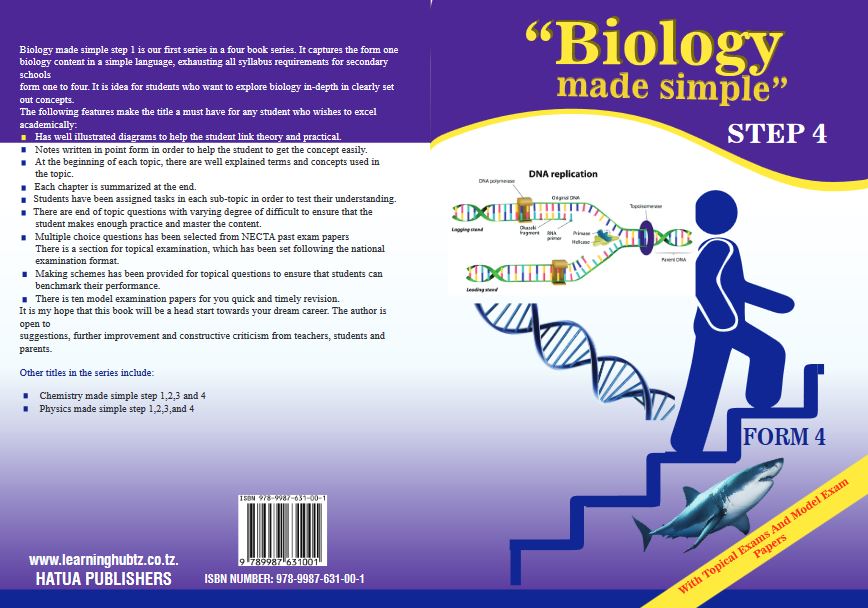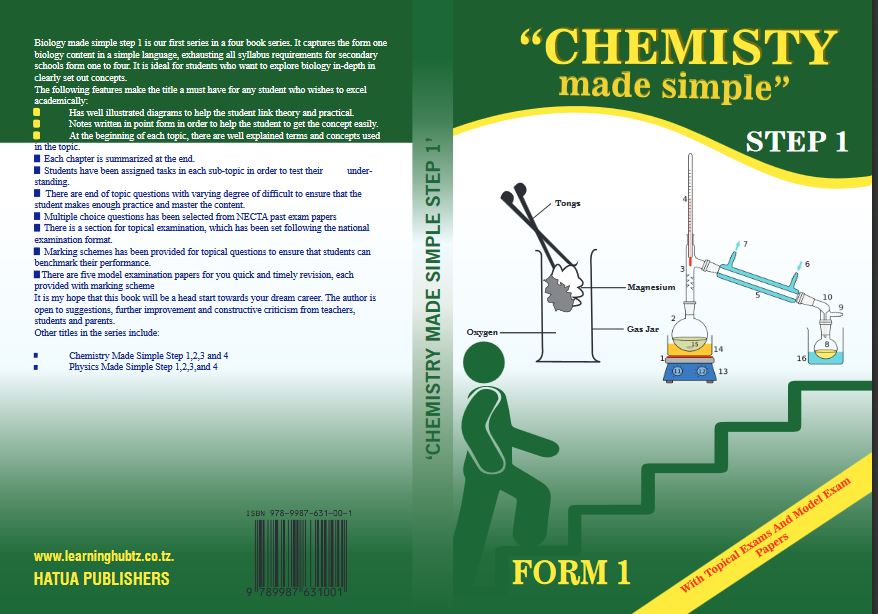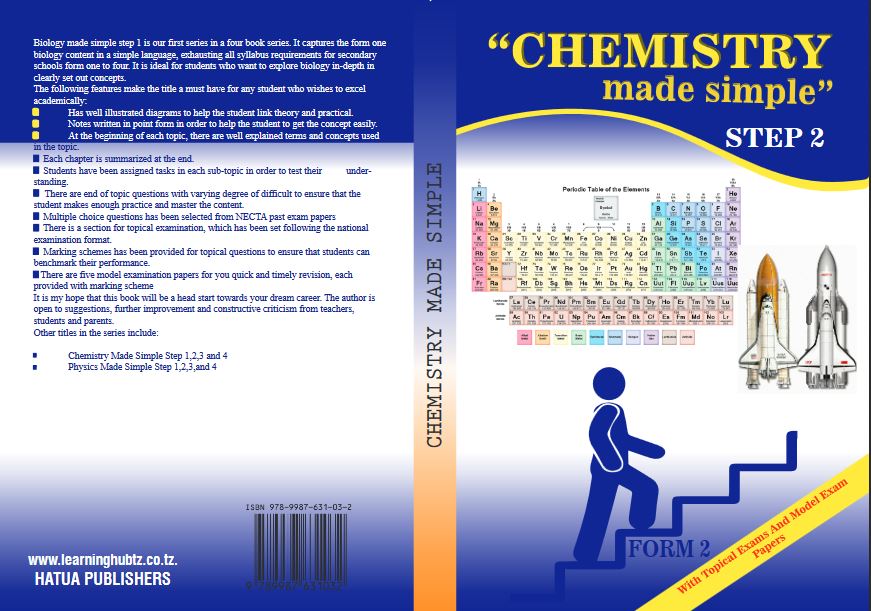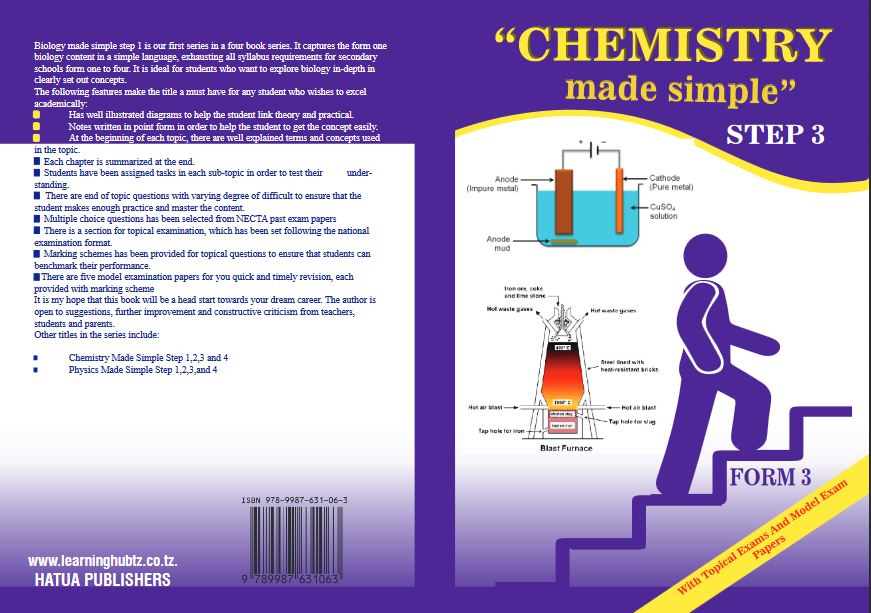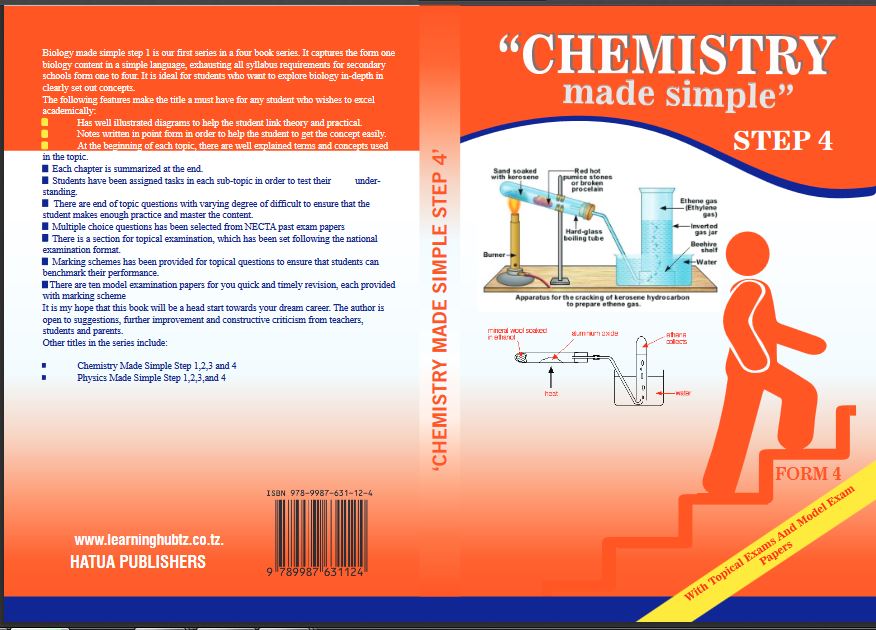OFFICE OF THE PRESIDENT, REGIONAL ADMINISTRATION AND LOCAL GOVERNMENT
SECONDARY EXAMINATION SERIES
BIOLOGY FORM FOUR MARCH 2025
TIME 2:30 HOURS
Instructions
- This paper consists of three section A, B and C with a total of eleven (11) questions.
- Answer all questions from section A and B and two questions from section C.
- Section A carries sixteen (16) marks, section B carries fifty four (54) marks and section C carries thirty (30) marks.
- All writing should be in blue ink except diagrams which must be in pencil.
- All communication devices and any unauthorized material are not allowed in the examination room.
- Write your assessment number at the top right corner of every page.
SECTION A
(i) The following are the organs responsible for blood sugar regulations;
- liver and heart.
- Kidney and liver
- Heart and kidney
- Pancreas and liver.
- Spleen and liver.
(ii) Kameme was driving a bicycle in a sun day hour he lost a lot of water through sweating. Which of the following organs are responsible for water loss?
- Skin.
- Kidney
- Liver
- Stomach
- Nephron
(iii) A man with brown iris eyes married a woman with blue iris eyes, in F1 generation all of their offspring were brown iris eyes. What does this suggest about brown iris color?
- Incomplete dominance
- Complete dominance.
- Co dominance
- Multiple allelism.
- Partial dominance
(iv) Which of the following is the site of digestion where both mechanical and chemical digestion occurs?
- Stomach.
- Oesophagus.
- Mouth
- Small intestine.
- Duodenum
(v) Mr. Mbena has got a car accident and his head was damaged seriously and lead to the loss of his memory. Which part of Mr. Mbena's brain was damaged?
- Cerebrum
- Cerebellum
- Thalamus
- Hypothalamus
- Medulla oblongata
(vi) There are varieties of living things in the universe but each are made up of cell with three basic parts. Which set among the alternatives given below show these parts ?
- Cell membrane, cell wall and nucleus
- Cell membrane, nucleus and cytoplasm
- Cell membrane, nucleus and vacuole
- Cell membrane, cell wall and cytoplasm
- Cell membrane, centriole and nuclei
(vii) A patient has been diagnosed with low level of blood sugar in the blood. Which of the following hormone will be recommended to regulate the victim's blood sugar level?
- Vasopressin
- Insulin
- Glucagon
- Aldosterone
- Oxytocin
(viii) Which theory postulates that living organisms originated from non living organism ?
- Chemical evolution
- Cosmozian
- Special creation
- Spontaneous generation
(ix) The laboratory technician investigated the faeces of a patient and found organisms with flattened segmented bodies What is the name of the organisms?
- Tape worms
- Round worms
- Liver flukes
- Filarial worms
- Planana
(x) Why is it advised to build an incinerator in every hospi'al and health centre?
- For collecting wastes
- For disposing gaseous wastes
- For disposing liquid wastes
- For burning hazardous wastes
- For disposing plastic wastes
2. Match the phrases in list A with response in list B by writing the letter of the correct response below corresponding item number in a table below.
| LIST A | LIST B |
| (i) A type of seed germination where by cotyledons are pushed above the ground. (ii) A pore which allows water enters into seed during germination. (iii) Inability of seed to germinate. (iv) Prevent a viable seed to germinate (v) A type of cell division where by the same number of chromosomes is maintained from parent cell to daughter cell. (vi) Increases the length and height of roots and shoots |
|
3. On their way home, Nina and her friends saw a variety of things. Some were living things while others were non -living things. Among the things they saw were baobab trees, cars, Mango trees, stones, butterfly, gravels, pebbles, dogs, water streams and birds.
- Sort the organisms into living and non-living
- Give two reasons for placing the organisms above into living group
- Give two reasons for placing the organisms into non-living group
4. Organisms with simple body structure like Amoeba and Paramecium do not need any elaborate system for excretion because they only use diffusion to remove wastes from their bodies. On the other hand higher animals like humans, cows and birds need more complex system for excretion due to their nature, concentration and varieties of wastes they excrete.
- Analyse the three (03) types of excretory products excreted by higher organisms
- Cite any three (03) organs used by higher organisms for excretion.
5. (a) Growth pattern of an organism refers to the series of growth and development whereby in the first stage of growth the organism slows down the rate of growing due to several factors. Using five points approve the statement above.
(b) Mr. Tindwa is a farmer, he made a survey to the farm where maize was planted and observed that all seeds have germinated. State the environmental conditions that are necessary and their function for germination to take place.
6. (a) Explain why
(i) The rate of breathing increase quickly during exercise?
(ii) Is better to breathe through nose than through the mouse
(b) How are respiratory surfaces adapted to their role? (Give 5 points)
7. Form two students performed an experiment to determine food substance contained in a sample G. They took 2cm 3 of sample G into a test tube. They added equal volume of sodium hydroxide followed by three drops of copper 2 sulphate solution. A purple coloration was observed.
a) Which food substance present in sample G?
b) State two (2) functions of the food substance that was present in sample G.
c) Name the parts of alimentary canal in which food present in G is firstly digested
d) Identify two (2) natural sources of food substance contained in sample G
e) Give two (2) disorders of food substance contained in sample G when it is insufficient in children
8. a) Explain one (1) role played by the following substances in digestion a
i) Bile
ii) maltase enzyme
iii) Hydrochloric acid
b) How do animals like human beings benefit from the process of photosynthesis occurring in plants.
9. (a) (i)Define the term mitosis
(ii)Outline the significance of mitosis to organisms
(b) Define the following terms and give an example of organism where each takes place
(i) Complete metamorphosis
(ii) Incomplete metamorphosis
(iii)Ecdysis
10. Write an essay to explain (5) advantages and three (3) disadvantages of coniferophyte.
SECTION C. 15 MARKS. ANSWER QUESTION 11
11. Respiration in absence of oxygen is common to both plants and animals: -
a) Explain how this type of respiration differ in plants and animals.
b) Explain how is it commercially and industrially useful (05 points)
FORM FOUR BIOLOGY EXAM SERIES 203
FORM FOUR BIOLOGY EXAM SERIES 203
OFFICE OF THE PRESIDENT, REGIONAL ADMINISTRATION AND LOCAL GOVERNMENT
SECONDDARY EXAMINATION SERIES
BIOLOGY FORM FOUR MARCH
TIME 2:30 HOURS
Instructions
- This paper consists of three section A, B and C with a total of eleven (11) questions.
- Answer all questions from section A and B and two questions from section C.
- Section A carries sixteen (16) marks, section B carries fifty four (54) marks and section C carries thirty (30) marks.
- All writing should be in blue ink except diagrams which must be in pencil.
- All communication devices and any unauthorized material are not allowed in the examination room.
- Write your assessment number at the top right corner of every page.
(iii) The following are the organs responsible for blood sugar regulations;
- liver and heart.
- Kidney and liver
- Heart and kidney
- Pancreas and liver.
- Spleen and liver.
(iv) Kameme was driving a bicycle in a sun day hour he lost a lot of water through sweating. Which of the following organs are responsible for water loss?
- Skin.
- Kidney
- Liver
- Stomach
- Nephron
(v) A man with brown iris eyes married a woman with blue iris eyes, in F1 generation all of their offspring were brown iris eyes. What does this suggest about brown iris color?
- Incomplete dominance
- Complete dominance.
- Co dominance
- Multiple allelism.
- Partial dominance
(vi) Which of the following is the site of digestion where both mechanical and chemical digestion occurs?
- Stomach.
- Oesophagus.
- Mouth
- Small intestine.
- Duodenum
(i) Mr. Mbena has got a car accident and his head was damaged seriously and lead to the loss of his memory. Which part of Mr. Mbena's brain was damaged?
- Cerebrum
- Cerebellum
- Thalamus
- Hypothalamus
- Medulla oblongata
(ii) There are varieties of living things in the universe but each are made up of cell with three basic parts. Which set among the alternatives given below show these parts ?
- Cell membrane, cell wall and nucleus
- Cell membrane, nucleus and cytoplasm
- Cell membrane, nucleus and vacuole
- Cell membrane, cell wall and cytoplasm
- Cell membrane, centriole and nuclei
(iii) A patient has been diagnosed with low level of blood sugar in the blood. Which of the following hormone will be recommended to regulate the victim's blood sugar level?
- Vasopressin
- Insulin
- Glucagon
- Aldosterone
- Oxytocin
(viii) Which theory postulates that living organisms originated from non living organism ?
- Chemical evolution
- Cosmozian
- Special creation
- Spontaneous generation
(ix) The laboratory technician investigated the faeces of a patient and found organisms with flattened segmented bodies What is the name of the organisms?
- Tape worms
- Round worms
- Liver flukes
- Filarial worms
- Planana
(x) Why is it advised to build an incinerator in every hospi'al and health centre?
- For collecting wastes
- For disposing gaseous wastes
- For disposing liquid wastes
- For burning hazardous wastes
- For disposing plastic wastes
2. Match the phrases in list A with response in list B by writing the letter of the correct response below corresponding item number in a table below.
| LIST A | LIST B |
| (i) A type of seed germination where by cotyledons are pushed above the ground. (ii) A pore which allows water enters into seed during germination. (iii) Inability of seed to germinate. (iv) Prevent a viable seed to germinate (v) A type of cell division where by the same number of chromosomes is maintained from parent cell to daughter cell. (vi) Increases the length and height of roots and shoots |
|
3. On their way home, Nina and her friends saw a variety of things. Some were living things while others were non -living things. Among the things they saw were baobab trees, cars, Mango trees, stones, butterfly, gravels, pebbles, dogs, water streams and birds.
- Sort the organisms into living and non-living
- Give two reasons for placing the organisms above into living group
- Give two reasons for placing the organisms into non-living group
4. Organisms with simple body structure like Amoeba and Paramecium do not need any elaborate system for excretion because they only use diffusion to remove wastes from their bodies. On the other hand higher animals like humans, cows and birds need more complex system for excretion due to their nature, concentration and varieties of wastes they excrete.
- Analyse the three (03) types of excretory products excreted by higher organisms
- Cite any three (03) organs used by higher organisms for excretion.
5. (a) Growth pattern of an organism refers to the series of growth and development whereby in the first stage of growth the organism slows down the rate of growing due to several factors. Using five points approve the statement above.
(b) Mr. Tindwa is a farmer, he made a survey to the farm where maize was planted and observed that all seeds have germinated. State the environmental conditions that are necessary and their function for germination to take place.
6. (a) Explain why
(i) The rate of breathing increase quickly during exercise?
(ii) Is better to breathe through nose than through the mouse
(b) How are respiratory surfaces adapted to their role? (Give 5 points)
7. Form two students performed an experiment to determine food substance contained in a sample G. They took 2cm 3 of sample G into a test tube. They added equal volume of sodium hydroxide followed by three drops of copper 2 sulphate solution. A purple coloration was observed.
a) Which food substance present in sample G?
b) State two (2) functions of the food substance that was present in sample G.
c) Name the parts of alimentary canal in which food present in G is firstly digested
d) Identify two (2) natural sources of food substance contained in sample G
e) Give two (2) disorders of food substance contained in sample G when it is insufficient in children
8. a) Explain one (1) role played by the following substances in digestion a
i) Bile
ii) maltase enzyme
iii) Hydrochloric acid
b) How do animals like human beings benefit from the process of photosynthesis occurring in plants.
9. (a) (i)Define the term mitosis
(ii)Outline the significance of mitosis to organisms
(b) Define the following terms and give an example of organism where each takes place
(i) Complete metamorphosis
(ii) Incomplete metamorphosis
(iii)Ecdysis
10. Write an essay to explain (5) advantages and three (3) disadvantages of coniferophyte.
SECTION C. 15 MARKS. ANSWER QUESTION 11
11. Respiration in absence of oxygen is common to both plants and animals: -
a) Explain how this type of respiration differ in plants and animals.
b) Explain how is it commercially and industrially useful (05 points)
FORM FOUR BIOLOGY EXAM SERIES 202
FORM FOUR BIOLOGY EXAM SERIES 202
PRESIDENT’S OFFICE, REGIONAL ADMINISTRATION AND LOCAL GOVERNMENT
SECONDARY EXAMINATION SERIES,
MID TERM ONE – MARCH-2024
BIOLOGY FORM FOUR
Time: 3Hours
Instructions
- This paper consists of sections A, B, and C with a total eleven (11) questions.
- Answer all question in the sections A, B and two (2) questions from section C.
- Section A carries sixteen (16) marks, section B fifty four (54) marks and section C carries thirty (30) marks.
- All writing should be in blue or black pen, except for diagrams that must be drawn in pencil.
- Communication devices and any unauthorized materials are not allowed in the examination room.
- Write your Examination Number on every page of your answer booklet (s)
SECTION A.
- For each of the following items (i-x).Choose the correct answer from given alternatives and writer its letter besides the item number in the answer booklet
- A boy climbed a coconut tree and harvest coconuts. Unfortunately, he falls down and broke his upper arm. Which bone was broken
- Ulna
- Humerus
- Radius
- Ferrium
- Tibia
- Which control measure would you recommend to a patient diagnosed with diabetes mellitus?
- Reduce intake of sugar food
- Limiting amount of water intake
- Reduce intake of cholesterol food
- Eating enough starch and water
- Consuming a high fat food
- The brain has the following function except;
- It receives impulse from all sensory organs of the body
- It sends off motor impulse to the gland and muscles
- It restores information
- It has an excitation effects on the body
- It is centre for information processing
- A neuron that carries impulse form brain or spinal cord to effector organ where the physical activity take place is
- Sensory
- Relay
- Motor
- Intermediate
- Brain
- Nerve impulses from the eyes, ears, and tongue are interpreted in the;
- Cerebellum
- Optic lobe
- Medulla oblongata
- Cerebrum
- cochlea
- Which of the following is not part of urine formation
- filtration
- regulation
- reabsorption
- secretion
- none of the above
- The following actions regulates temperature in mammalians
- sweating, shivering, swimming, and urinating
- shivering , vasodilatation, sweating, and vasoconstriction
- conduction, radiation, convection, and swimming
- vasodilatation, swimming, sweating, and location
- swimming, radiation, constriction and conduction
- The following are benefits of breast milk to a baby except
- it is curative, or it can cure child illness
- creates emotion bond between child and mother
- it is free
- it is at right temperature
- it provides balanced diet to the child
- Which of the following set represent blood directly concerned with combating of diseases;
- red blood cells and platelets
- platelets and antibodies
- phagocytes and lymphocytes
- white blood cells and red blood cells
- lymphocytes and plasma
- While conducting an experiment in the laboratory at night the light suddenly went off, which of these changes occurred in student’s eyes?
- The lens became thicker
- Pupil enlarges
- Cilliary muscle relaxed
- The lids closed
- The eyes opened wide
- Match the following in list A with the corresponding terminology in list B by writing the letter of the correct response beside the item number
| LIST A | LIST B |
|
|
SECTION B
(54 Marks)
Answer all questions in this section
- (a) In home garden butterfly and bees were seen flying from one flower to another. This action is said to be important in fertilization of plant
- Give the name of process which was facilitated by the action of insects
- Explain the two types of process which facilitated in 3 (i) above
(b) Why is breastfeeding more preferable than bottle feeding?
- (a) Explain why?
- The rate of breathing increase during exercise
- Is better to breathe through nose than through mouth
(b) How are respiratory surface adapted to their role? Give five points
- Form three students performed an experiment to determine food substance contained in samples G. They took 2cm³ of sample G in a test tube. They added equal volume of Sodium Hydroxide followed by three drops of copper II sulphate solution. A purple coloration was observed.
- Which food substance was present in G
- state two function of food present in G
- name the parts of Alimentary canal in which food G is digested
- identify two natural sources of food substance G
- giver two disorder of food substance contained in sample G when deficiency in Children
- Bread was put in a wet cupboard. A few days black thread like structure which ended up in club like structure appeared on the bread.
- Write the common name of an organism that grew on the bread surface
- Name the kingdom and phylum in which observed organism belongs
- Outline (4) advantages of member of kingdom you have mentioned in (b) above
- (a) Name structure for movement in the following organism
- Amoeba
- Paramecium
- Euglena
(b) Using five points explain importance of Skeleton
- (a)Explain importance of Genetic Engineering to development of country
(b) When a red flower was crossed with a white flower all members of FI generation were pink. When pink flowered plant were selfed, a mixture of red, pink and white flowered rose were obtained.
- Illustrate above crossing using genetic diagram
- What types of inheritance was shown by crossing in (b) above? give a reason
SECTION C
30 Marks
- (i) Juma was making tea for his father. He accidentally touched a hot pan whole switching off stove. He pushed away a pan and poured all the tea.
- What action did he exhibit?
- Give the meaning of the action, mention other two examples of the action.
- How useful is such an action to organism.
(ii) Briefly explain hearing mechanism in man
- Analyze six features that make the human heart to pump blood efficiently.
- One of your brothers has refused to practise family planning and he gets child every year. Convince him Importance of family planning.
FORM FOUR BIOLOGY EXAM SERIES 176
FORM FOUR BIOLOGY EXAM SERIES 176
PRESIDENT OFFICE REGIONAL ADMINISTRATION AND LOCAL GOVERNMENT
SECONDARY EXAMINATION SERIES
COMPETENCE BASED ASSESSMENT
033/1 BIOLOGY FORM FOUR
NEW EXAM FORMAT-2023
MID-TERM EXAMS MARCH – 2023
Time: 3:00 Hours
Instruction
- This paper consists of sections A, B and C with a total of Eleven (11) questions.
- Answer all questions in sections A and B and one (1) question from section C
- Except for diagrams that must be drawn in pencil, all writing should be in blue or black ink.
- Calculators, cellular phones and any unauthorized materials are not allowed in the examination room.
- Write your Examination Number on every page of your answer booklet(s)
SECTION A( 16 Marks)
1. For each of the items (i) – (x), choose the correct answer from among the given alternatives and write its letter beside the item number in the answer booklet provided.
- The regions a most active growth in plants are found manly in the
- Axillary buds and flowers
- Stems and leaves
- Stems and roots hairs
- Leaves and flowers
- Stems and root apices
- Which one is a feature of aging in human beings
- Shorter reaction time
- Strong muscles
- Body increase in size
- Wrinkling of the skin
- Which part of seed grows to the root system of a plant
- Cotyledon
- Micropyle
- Plumule
- Radical
- Hilum
- Tongue Rollers in genetics is an example of
- Gametogenesis
- Continuous variation
- Swallowing
- Lubricating food
- Discontinuous variation
- The off spring produced by mating the F1 generation is known as
- F3 generation
- F1 products
- F2 generation
- New generation
- Genetic generation
- If a parent cell has 12 chromosomes, how many chromosomes will be in the daughter cells formed after meiosis?
- Six (6)
- Eighteen (18)
- Twelve (12)
- Twenty (20)
- Thirty – six (36)
- The following are characteristic of prokaryotes except
- Have nuclear materials
- They are microscopic
- Have nuclear membrane
- Have cell wall
- They are single called organism
- Which of the following are end products digestions when lipids are digested completely?
- Glucose and Fructose
- Fatly acid and fructose
- Amino Acids and fructose
- Glucose and glycerol
- Fatty acids and glycerol
- The following balanced habitat contains grasses wildebeests, Lions and bacteria. What would happen if lions were removed?
- The number of bacteria would remains the same
- The number of wildebeest would decrease
- The amount of grass would increase
- The number of wildebeest would increase
- The number of wildebeest would increase
- Which respiratory surface is used for gaseous exchange in tadpoles
- Spiracles
- Gils
- Lungs
- Skin
- Book-Lung
2. Match the description terms used in genetics in List B with their corresponding terminologies in List A by writing the letter of correct response beside the item number in the answer booklet
| LIST A | LIST B |
|
|
SECTION B (54 Marks)
Answer all questions in this section
3. (a)Well-built laboratory is necessary requirement for safety while working outline four features of well-built laboratory.
(b)Mary is in puberty stage, advice her on ways of maintaining hygiene to stay health during this stage.
4. (a)Briefly explain How fertilization occur in flowering plants
(b)How does the body of a mammal regulate temperature during hot weather?
5. (a)By tabulating your answer below, differentiate aerobic and anaerobic respiration
| | Features | Anaerobic respiration | Aerobic respiration |
| | Site in the cell | | |
| | Substrate involved | | |
| | End products | | |
| | Amount of Energy per molecule | | |
(b)How is Mammalian eye adapted to its functions?
6. (a)Differentiate between meiosis and mitosis
(b) Give importance of meiosis in living organism
7. (a)Describe four evidences of organic evolution
(b)Name three types of muscles found in Mammals
(c)Briefly explain how muscles are adapted to their role. Give three points
8. (a) Briefly explain importance of four excretory products of plants
(b) Explain why plants do not need elaborate transport system
SECTION C (30 marks)
Answer two (2) questions from this section.
9. Drug abuse is a serious problem among the youth. Describe Cow Youth can avoid drug abuse.
10. Describe the mechanism of hearing in human being
11. Describe the importance of genetic engineering
FORM FOUR BIOLOGY EXAM SERIES 140
FORM FOUR BIOLOGY EXAM SERIES 140
MINISTRY OF EDUCATION, REGIONAL ADMINISTRATION AND LOCAL GOVERNMENT
COMPETENCE BASED SECONDARY EXAMINATION SERIES
BIOLOGY 1 MID TERM EXAMINATION
FORM FOUR-2022
Time: 3Hours
Instructions.
- This paper consists of section A, B and C with a total of 15 questions.
- Answer all questions in section A and B and TWO (2) question from section C in which question 13 compulsory.
- All writing should be in blue or black pen, except for diagrams that must be drawn in pencil.
- Cellular phones and any unauthorized materials are not allowed in the examination room.
- Write your number on every page of your answer booklet.
SECTION A (20 Marks)
Answer All questions in this section.
1. For each of the items (i) - (x), choose the correct answer among the given alternatives and write its letter beside the item number in the answer booklet provided.
- Which of the following are parasitic eukaryotic organisms?
- Amoeba and paramecium
- Euglena and green algae
- Trypanosome and plasmodium
- Brown algae and amoeba
- Plasmodium and amoeba.
(ii) The outer most living structure in plant cells is the;
- Cell wall
- Cytoplasm
- Cell membrane
- Nuclear membrane
- Ectoplasm.
(iii) The part of cassava plant which is modified for food storage is;
- An underground stem
- An underground root
- A corn
- A prop root
- An underground stalk.
(iv) The human body can make one of the following vitamins for itself;
- Vitamin A
- Vitamin B
- Vitamin K
- Vitamin D
- Vitamin E.
(v) Which of the following does not belong to kingdom plantae
- Bryophytes
- Pteridophytes
- Basidiomycotes
- Angiospermaphytes
- Ferns.
(vi) Identify the wrong statement about monocots
- Have taproots
- Have parallel venation
- Floral parts are in three or multiple of three
- Lacks pith on the stem
- Have fibrous roots
(vii) Which statement is true about dicots?
- Has one cotyledon
- Has cambium in stem and roots
- Floral parts are in four or six and their multiples
- Leaves are narrow and flat
- Lack flowers
(viii) Seedless fruits like bananas are known biologically as
- Succulent fruits
- Compound fruits
- Single fruits
- Parthenocarpic fruits
- Drupe
(ix) The conjugation sexual reproductive process in paramecium produces
- Only two paramecia
- Only ten paramecia
- Six paramecia
- Eight paramecia
- Four paramecia
(x) Maize grain is a fruit and not a seed as the structure contain
- One and two scars of attachment
- One scar of attachment
- Two scars of attachment
- Three scars of attachment
- Four scars of attachment
2. Match the functions of the parts of microscope in List A with their corresponding parts of microscope in List B by writing the letter of the correct response beside the item number in the answer booklet provided.
| LIST A | LIST B |
|
|
SECTION B (60 Marks)
Answer all questions in this section.
3. (a) What do you understand by term “Diffusion”?
(b) Name structures concerned with gaseous exchange in plants
(c) Explain mechanism of gaseous exchange in man.
4. (a) Outline four reasons for studying Biology in schools.
(b) Define Respiration
(c) Give five features of respiratory surfaces.
5. Using well labeled diagrams, show the differences between monocots and dicots
6. Explain using diagrams the differences in the arrangement of vascular bundles in monocots and dicots
7. Discuss the advantages and disadvantages of division angiospermophyta.
8. (a). Give the differences between the following items as used in growth by giving examples.
(i). Diffuse growth and allometric growth
(ii). Limited growth and unlimited growth
(b) (i). Draw the diagram of sigmoid growth curve, label the four significant phases
(ii). Briefly explain why during adolescence stage the rate of growth is rapid.
9. (a) Draw a well labeled diagram of apical meristem in the shoot
(b) Locate the region of much cell division
(c ) Explain the terminology “apical meristem” as used in the diagram in Q10(a) above.
(d) Why is it said that growth in plant is apical?
10. (a) Define growth in Animals
(b) Mention factors that affect growth in Animals
(c ) Explain the factors mentioned in Q11(b) above
11. (a) (i) What is a tissue
(ii) Name three animal and plant tissues.
(b) State the structural differences between cell wall and a cell membrane.
(c) Describe the function of blood plasma.
12. Write an essay on food preservation using following guidelines.
- Definition of food preservation
- Method used in food preservation
- Examples of food preserved in each method.
SECTION C (25 Marks) Answer two (2) questions from this section. Question 13 is compulsory.
13. Write an essay on typhoid using guidelines below.
- Meaning
- Cause
- Symptoms
- Effects
- Prevention and control
14. Give and account of what happens during each of the following stages.
i) Interphase ii) prophase iii) metaphase iv) anaphase v) Telophase
FORM FOUR BIOLOGY EXAM SERIES 75
FORM FOUR BIOLOGY EXAM SERIES 75
THE PRESIDENT’S OFFICE MINISTRY OF EDUCATION, REGIONAL ADMINISTRATION AND LOCAL GOVERNMENT
SECONDARY EXAMINATION SERIES
BIOLOGY 1 MID TERM EXAMINATION
FORM FOUR-2021
Time: 3Hours
Instructions.
- This paper consists of section A, B and C with a total of 15 questions.
- Answer all questions in section A and B and TWO (2) question from section C in which question 13 compulsory.
- All writing should be in blue or black pen, except for diagrams that must be drawn in pencil.
- Cellular phones and any unauthorized materials are not allowed in the examination room.
- Write your number on every page of your answer booklet.
SECTION A (20 Marks)
Answer All questions in this section.
1. For each of the items (i)-(xv), choose the correct answer from among the given alternatives and write its letter beside the item number in the answer booklet provided.
- Lymphocytes have the ability to produce chemicals in response to the antigens. These chemical are called;
- Pathogens
- Immunity
- Antibodies
- Antigens
- Parasites.
- In mammals, the heart and its blood vessels make up the;
- Circulatory system
- Organ system
- Skeletal system
- Nervous system
- Hormonal.
- Urea production in the liver would probably increase when the amount of one of the following increases in the blood;
- Fatty acids
- Glycerals
- Amino acids
- Glucose
- Fructose
- A patient having blood group B can receive blood from donor who is blood group;
- B only
- B and AB only
- B and O only
- AB only
- O only
- The following is likely to happen when blood supply to the brain is minimum;
- Shock
- Vomiting
- Fainting
- choking
- Sneezing
- The function of cones of the human eye is to;
- Sense light
- Sense colour
- Cover the eye
- Reflect light
- Protect the eye
- Joints are held together by;
- Ligaments
- Cartilage
- Tendon
- Muscles
- Bones
- The by-products in photosynthesis process are;
- Carbohydrate and water
- Carbohydrate and carbon dioxide
- Carbon dioxide and oxygen
- Oxygen and water
- Oxygen and air
- The ability of human body to resist infections caused by micro organism is known as;
- Immunity
- Inoculation
- Treatment
- Vaccination
- Medicine
- The part of the cassava plant which is modified for food storage is;
- An underground stem
- An underground root
- An underground stalk
- A corm
- A shoot
- Match the responses in LIST B with the phrases in LIST A by writing the letter of the correct response from list B beside the item number of list A in your answer booklet.
| LIST A | LIST B |
|
|
SECTION B: 60 Marks
Answer ALL questions in this section
- (a) (i) Define the term “good manner”.
(ii) What is the basic difference between active immunity and passive immunity?
(iii) Give ways of reducing the risk of HIV transmission
(b) The following terms are arranged in alphabetical order. Rearrange them into an appropriate
biological sequence, starting with the smallest;
Cell, Organ, Organism, System, Tissue
- (a) Explain the meaning of the following ecological terms;
- Food chain (ii) Trophic level
![]()
From the above chain identify the organ which is;
- A primary producer
- A tertiary consumer
- Herbivores
- Carnivores
- What is a role of bacteria in the chain above
- (i) What is classification?
(ii) State three distinctive features of the kingdom plantae
(iii) What is meant by the term “Sporophyte”.
(iv) With one example each list six phylum belong to the kingdom protoctista.
- (a) (i) What is photosynthesis
- Briefly give 3 importance of photosynthesis
(b) List briefly explains 3 traditional method of food preservation.
7. (a) Explain the difference between sexual and asexual production.
(b)Describe the function of the following parts of reproductive system.
(i) Ovary
(ii) Fallopian tube (oviduct)
(iii) Testes
(iv) Seminal vesicles
8. (a) Distinguish between semen from sperm.
(b) Explain why in most mammals, the testes descend outside.
9. Differentiate between the following pairs of terms;
(i) An enzyme and a hormone
(ii) Population and community
(iii) Geotropism and Phototropism
10. (a) The diagram below represents the arrangement of a tube and structures through which oxygen passes as it travels from the atmosphere into the blood of animals;

- Name the tube represented by the number 1, 2 and 3.
- Name the structure represented by the number 4.
(b) (i) State (4) adaptation features of the structure represented by the number 4, to its function.
(ii) Give out two differences between inhaled air and exhaled air.
11. (a) Define the following terms as applied to cell structure and organization.
(i) A cell
(ii) Cell differentiation
(b) Compare and contrast animal cell and plant cell (Diagrams are not necessary).
12. (a) Define the following terms;
(i) Classification
(ii) Binomial nomenclature
(b) (i) Explain three 3 points on the importance of classification
(ii) Classify the following organisms to class level Butterfly and Spider.
SECTION C:
Answer ONE 1 question from this section
13. (a) Define the following terms;-
(i) Infection
(ii) Diseases
(iii) Pathogen
14. (a) Define the following terms;
(i) Homeostasis
(ii) Osmoregulation
15. Describe the factors affecting growth in plants and animals
FORM FOUR BIOLOGY EXAM SERIES 39
FORM FOUR BIOLOGY EXAM SERIES 39
THE OFFICE OF THE PRESIDENT
MINISTRY OF EDUCATION AND LOCAL GOVERNMENT
MID TERM EXAMINATION- MARCH-2020
033/1 BIOLOGY 1
Time: 3Hours
Instructions:
- This paper consists of sections A, B and C with a total of fifteen (15) questions.
- Answer all questions in sections A and B and two (2) question2 from section C of which question 13 is compulsory.
- All writing should be in blue or black pen, except for diagrams that must be drawn in pencil.
- Cellular phones and any unauthorized materials are not allowed in the examination room.
- Write your Examination Number on every page of your answer booklet(s)
SECTION A (15 Marks)
Answer all questions in this section.
1. For each of the items (i) – (x), choose the correct answer from among the given alternatives and write its letter beside the item number in the answer booklet provide.
(i) Why is it advised to build an incinerator in every hospital and health centre?
- For collecting wastes
- For disposing gaseous wastes
- For disposing liquid wastes
- For burning hazardous wastes
- For disposing plastic wastes.
(ii) Mrs. Juma’s child has protruding stomach and swollen lower limbs. What type of food should she give to her child to overcome the problems?
- Starch
- Lipids
- Proteins
- Minerals
- Vitamins
(iii) In the food chain: Grass Zebra Lion. A lion is
- A primary consumer
- A secondary consumer
- A producer
- A tertiary consumer
- A decomposer
(iv) Water from the roots of flowering plants is transported up to the plant by different forces. Which of the following forces initiates and raises water to the least height?
- Root pressure
- Transpiration pull
- Cohesion forces
- Adhesion forces
- Capillarity
(v) A patient has been diagnosed with level of blood sugar. Which hormone would you recommend to regulate the victim’s sugar?
- Insulin
- Glucagon
- Antidiuretic
- Aldosterone
- Testosterone
(vi) Which one is the feature of aging in human beings?
- Shorter reaction times
- Strong bones
- Strong muscles
- Body increase in size
- Wrinkling of the skin.
(vii) Viruses are considered to be non – living because:
- Are only active in contents of living cell
- They have true nuclei
- Body is covered by a cell wall
- They are single – cell Eukaryotic organisms
- They are multicellular organisms.
(viii) The cell wall:
- Gives rigidity to plant and animal cells.
- Made up of a layer of pectin
- Are composed mainly of cellulose.
- Is a product of middle lamella
- Surrounds all types of cells.
(ix) Oxygen debt occurs when.
- Too much carbon dioxide is present in the body.
- Rate of respiration exceeds that of photosynthesis
- Alcohol is formed in the tissue.
- There is insufficient oxygen in muscle tissue during strenuous exercise.
- There is insufficient lactic acid in muscle tissue.
(x) Which of the following prevents surface of the articulating bones from being worn out by friction?
- Capsular ligament.
- Synovial membrane
- Articula cartilage
- Tendon
- Synovial capsule
2. Matching items questions.
| LIST A | LIST B |
|
|
SECTION B (60 Marks)
Answer all questions in this section
3. (a) (i) Identify two common features present in a villus and alveolus
(i) Mention the roles played by each feature in the structure mentioned in (a) above.
(b) Explain what would happen if:
(i) The pituitary gland failed to secrete antiduretic hormone.
(ii) Red blood cell lost haemoglobin.
4. (a) Study the diagram below and answer question that follows.

- Name the type of nutrition found in above plant
- Name the organism
- Discuss the environmental importance of this type of feeding
(b) Name the forces involved in water movement up the plant.
5. (a) (i) Kingdom plantae is divided into different divisions, mention them.
(ii) Give one example the plants which are found in each division.
(b) With the use of illustrations, differentiate between dicotyledonous and monocotyledonous in the following aspects.
- Venation
- Arrangement of vascular tissues in stem.
6. (a) Study the diagram below on nerve cell and answer the questions that follows.

- Name parts A, B, C, and D.
- Where does neurone in fig. above carry impulse to?
- Name (2) other types of nerve cells found in the nerves system of vertebrates and state their functions.
(b) State four differences between nervous communication and endocrine communication.
7. Consider that you are a medical doctor and you have received a patient whose investigation has diagnosed kidney stones. Suggest to the patient three possible causes and three control measures for kidney stones.
8. (a) What is the difference between marasmus and Kwashiorkor?
(b) A food substance was heated with sodalime, NaOH/CaO.
A gas was evolved which turned litmus paper blue. The gas smelled urine. What is the nature of this food substance?
9. How are the respiratory surfaces adapted to their role? Give four points
10. (a) Give two differences between cell membrane and cell wall.
(b) Why is cell differentiation important to living organisms? Give a reason.
11. (a) (i) Identify two common features present in a villus and alveolus
(i) Mention the roles played by each feature in the structure mentioned in (a) above.
(b) Explain what would happen if:
(i) The pituitary gland failed to secrete antiduretic hormone.
(ii) Red blood cell lost haemoglobin.
12. (a) Distinguish between exoskeleton and endoskeleton using the following sub headings.
(i) Position in the body
(ii) Composition
(iii) Examples of Organism in which they are found.
SECTION C (25 Marks)
Answer two (2) questions from this section. Question 13 is a compulsory.
13. Discuss the concept of drug abuse under the following heading.
- Meaning of Drug abuse
- Causes.
- Preventive and control measures.
14. Food preservation is very important in human life. Discuss its important under the following headings.
- Need for food preservation
- Local food preservation methods and their biological effects.
15. Majority of people believe that all fungi are harmful organisms. As a biologist, explain four ways in which fungi are beneficial to human being.
FORM FOUR BIOLOGY EXAM SERIES 1
FORM FOUR BIOLOGY EXAM SERIES 1
Hub App
 For Call,Sms&WhatsApp: 255769929722 / 255754805256
For Call,Sms&WhatsApp: 255769929722 / 255754805256
 For Call,Sms&WhatsApp: 255769929722 / 255754805256
For Call,Sms&WhatsApp: 255769929722 / 255754805256



